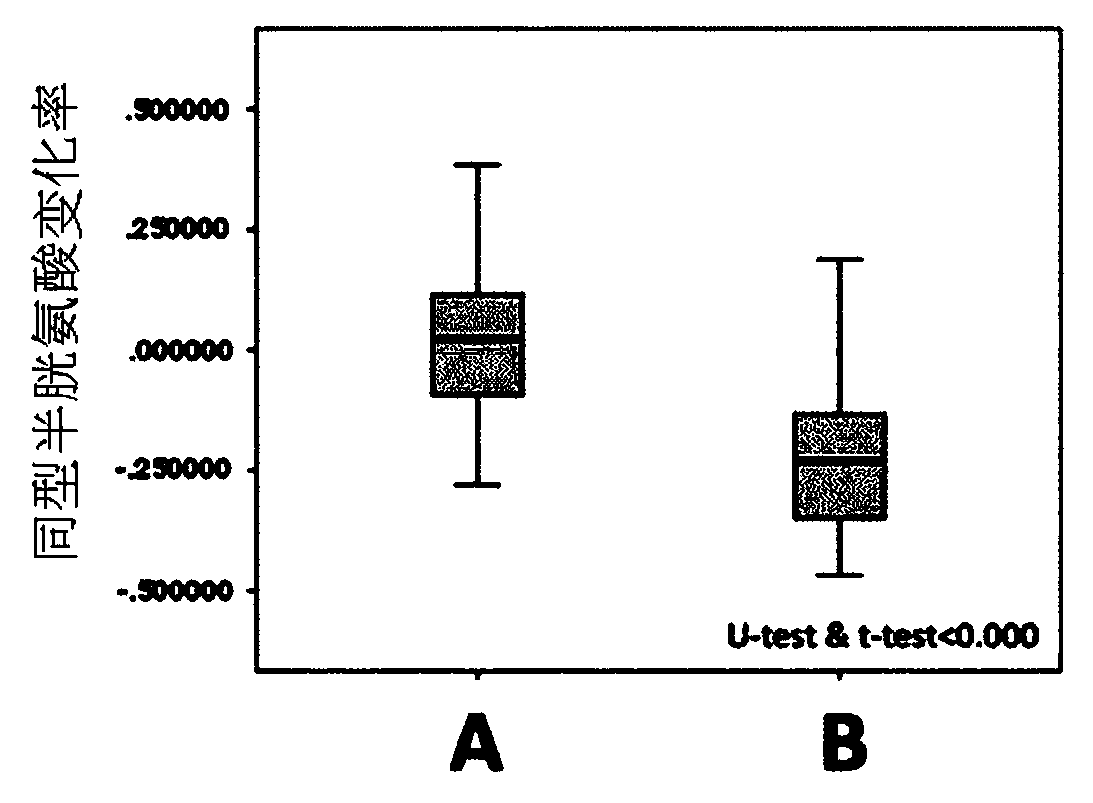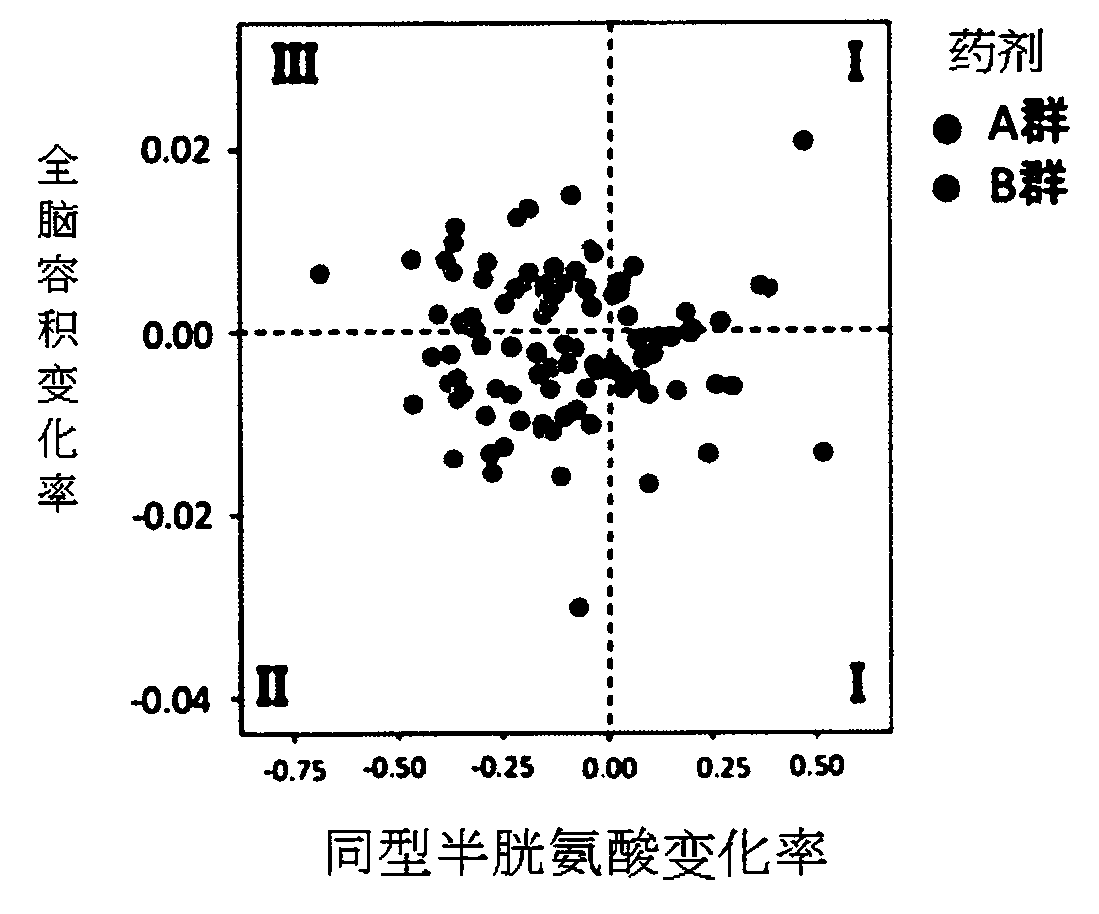Brain health food or brain health beverage, and method for administering same
A food and beverage technology, applied in the field of brain-enhancing food or drink, can solve the problems of brain atrophy that have not been mentioned, and achieve the effect of inhibiting the reduction of brain volume and promoting health
- Summary
- Abstract
- Description
- Claims
- Application Information
AI Technical Summary
Problems solved by technology
Method used
Image
Examples
Embodiment 1
[0064] (Embodiment 1. Evaluation of the influence of intake of brain-invigorating food on brain atrophy)
[0065] The brain-enhancing food of the present invention was ingested by non-dementia patients (able persons), and the preventive effect on brain atrophy caused by alcohol intake was evaluated.
[0066]
[0067] The subjects were 96 able-bodied persons (48 males and 48 females), and the effect of ingesting brain-invigorating food was detected through a randomized double-blind test. The test subjects were able-bodied people (average 48.4 years old) aged 30-60 years (average 48.4 years old), non-smokers and not taking nutritional supplements, and their health status including liver function was good.
[0068] The test subjects were divided into two groups, group A took placebo, and group B took a medicine containing 0.8 mg of folic acid, 20 mg of vitamin B6, and 0.5 mg of vitamin B12 every day. The subjects checked the following items at the 0th month, the 3rd month, and...
Embodiment 2
[0082](Example 2. Evaluation of the effect of intake of brain-invigorating food on brain atrophy, and the effect of MTHFR)
[0083] Based on the data obtained in Example 1, the genotypes (CC type: wild type, CT type: heterotype, TT type: homotype) of the SNP of MTHFR, the rate-limiting enzyme that metabolizes homocysteine, were used to conduct research again (see Figure 4A -C). Firstly, the subjects were divided into 3 groups (CC type, CT type, TT type) according to the 3 different genotypes among the MTHFR SNPs. Next, the same analysis as in Example 1 (comparison of group AB among numerical distributions of groups I, II, and III) was performed for each test group. As a result, the numerical distribution deviation of group I to group III in CT type (abnormal type) is very significant among AB groups (Mann-Whitney U test: p Figure 4B ). On the other hand, although the deviation of the numerical distribution in the CC type (wild type) has a similar tendency to that of the CT ...
Embodiment 3
[0084] (Example 3. The groups that provide brain-invigorating food to slow down the brain atrophy caused by drinking are regarded as the same (Δ condition))
[0085] The method of using the brain volume detection obtained by MRI in the above-mentioned embodiments 1 and 2 is to map the brain of the subject to a standard brain with a predetermined size, and after obtaining the probability distribution of the brain volume, obtain each brain volume by inverse mapping. The VBM (voxelbased morphometry) method of brain volume, however, the annual change of the brain volume of healthy people is as low as 1-2ml, so a more accurate detection method is needed.
[0086] Therefore, in this embodiment, different TBM (tensor based morphometry) methods are used for analysis, which do not penetrate the standard brain, but directly compare the brain volume of the subject's brain at two time points. That is, for the effect of preventing brain atrophy caused by alcohol intake, the whole brain vol...
PUM
 Login to View More
Login to View More Abstract
Description
Claims
Application Information
 Login to View More
Login to View More - R&D
- Intellectual Property
- Life Sciences
- Materials
- Tech Scout
- Unparalleled Data Quality
- Higher Quality Content
- 60% Fewer Hallucinations
Browse by: Latest US Patents, China's latest patents, Technical Efficacy Thesaurus, Application Domain, Technology Topic, Popular Technical Reports.
© 2025 PatSnap. All rights reserved.Legal|Privacy policy|Modern Slavery Act Transparency Statement|Sitemap|About US| Contact US: help@patsnap.com



